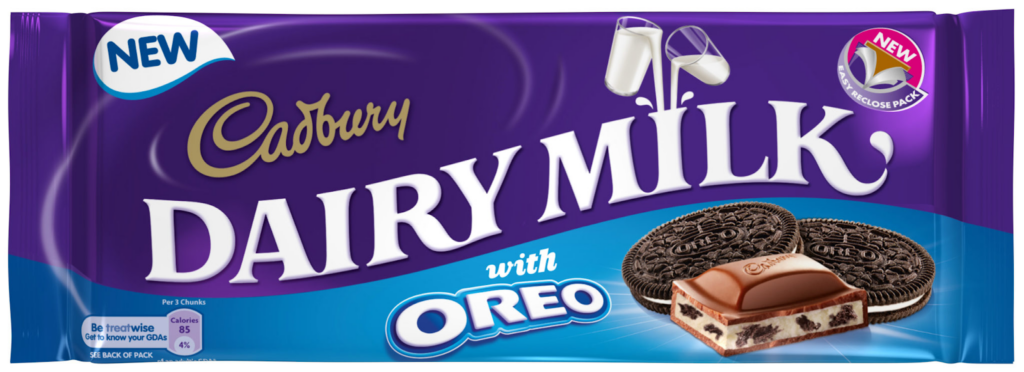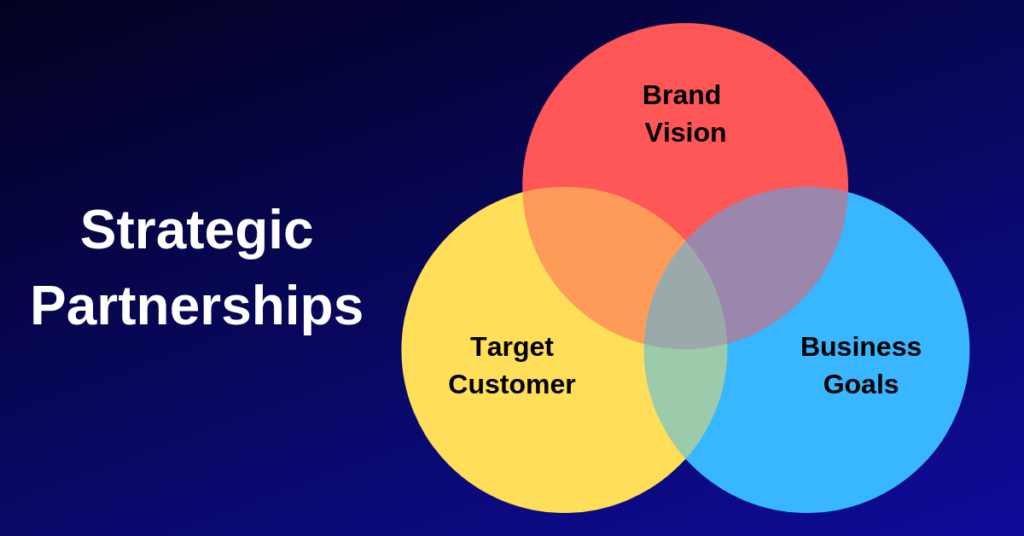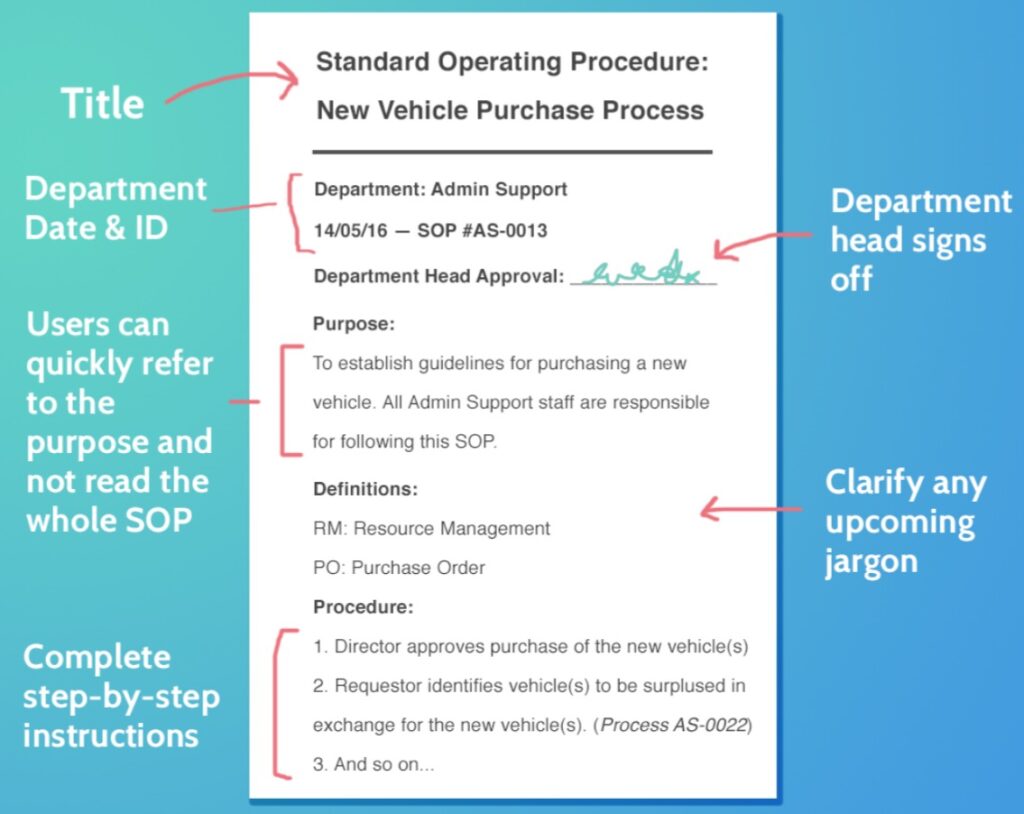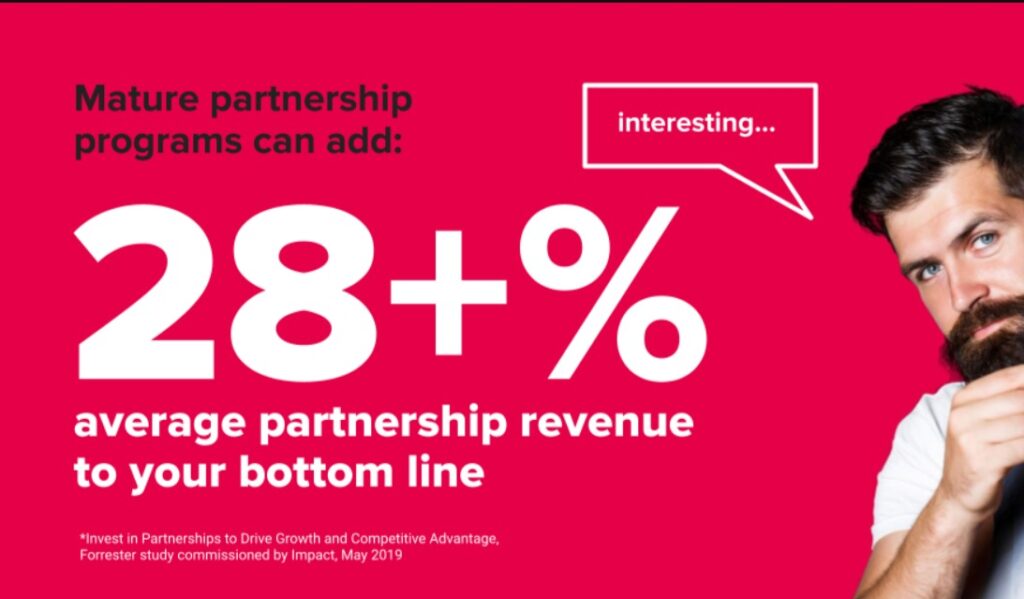Collaborations and joint ventures are necessary components of business success. Joining hands with non-competing brands to reach their audience helps you generate awareness, sales, and revenue quickly yet effectively.
Co-marketing lets you promote your products to another business’s audience and grow your customer base. The other business gets access to your audience to promote its product.
Unfortunately, most businesses don’t leverage strategic partnerships assuming everyone to be their competitor. That’s not the case.
This article explores co-marketing, its benefits, and how to set up a campaign for your business in detail so you can join hands with the right businesses to take your brand to the next level.
Let’s roll…
What is Co-Marketing?
Co-marketing is a strategic approach where two or more non-competing businesses promote each other’s products to their customers. The partnering brands share resources and expertise to reach new audiences and market jointly.
Selling a product isn’t essential. In fact, most brands leverage co-marketing for brand awareness, credibility, and reach a new audience without selling anything.
It is a kind of marketing partnership between two or more brands. Here’s an example of co-marketing giveaway campaign in action:

A whopping 68% of people buy products after viewing a partnership campaign and 54% of businesses say that they drive 20% of total revenue through partnerships with other businesses. This is what makes co-marketing an effective marketing technique:

The products offered in a co-marketing campaign should be, somehow related, and don’t have to be necessarily complementary. McDonald’s co-marketing campaign in Hong Kong with K-pop superstars involves two different business entities and the campaign turned out to be very successful:

The idea behind co-marketing campaigns is to reach a new target market, generate brand awareness and sales, and grow revenue. Both partners are treated equally in the campaign and equally enjoy benefits…
Co-Marketing Benefits

Here’s a list of the primary benefits of co-marketing that brands can’t resist:
- Access to a new market: Co-marketing offers you instant access to a new market. If you want to expand your business to another geographical region, you can partner with a local company that’ll give you an instant push.
- Reach new audience: You can reach a new audience within the same market with co-marketing. It gives you access to a loyal audience of an established business and this significantly improves your brand image and value when it is coupled with a business people trust and love.
- Highly effective: All the parties in a co-marketing campaign bring their resources together which makes these campaigns very successful and effective.
- Low-cost marketing technique: It is an extremely cost-effective marketing approach as you have to share partner brand’s products with your audience which doesn’t cost you any additional money. Also, all the marketing costs are shared among the partners, which makes it quite affordable.
- Low risk: The risk is quite low with co-marketing campaigns as you work with an established brand so even if you don’t generate sales, you’ll still be able to get decent press coverage. If the campaign fails, it doesn’t cost you a lot due to low investment.
- Experimentation: You can use co-marketing to test new product features and for other types of experimentation. For example, you can run a campaign in a new target market to assess demand.
- Sales and revenue: When done right, co-marketing campaigns are highly profitable as they drive massive sales and revenue.
- Networking: You can build and grow your network by partnering with different brands. If co-marketing is a part of your marketing strategy, you’ll see your network growing rapidly which means a lot.
Co-Marketing vs. Co-Branding
While co-marketing and co-branding might look similar, these are two different, but related marketing approaches.
Co-marketing is a technique where brands collaborate and promote their respective products without changing the product or branding.
Co-branding, on the other hand, is when companies recreate a new product with the branding of all the businesses. The new product is jointly promoted to the audience of all the brands eventually leading to higher brand awareness, sales, and credibility.
Cadbury and Oreo co-branded to create Dairy Milk with Oreo which is a new product. It attracts both Dairy Milk and Oreo lovers:

Co-branding is more specifically related to brands (which could belong to the same company as in the case of Oreo and Dairy Milk). The purpose is to strengthen the branding while co-marketing doesn’t necessarily focus on branding, rather it is a holistic marketing technique that can be used to achieve a wide range of marketing objectives such as sales, revenue, brand awareness, etc.
How to Create a Co-Marketing Campaign
Getting started with your co-marketing requires a well-thought-out and systematic process that covers all the nitty-gritty. It involves collaborating with another business so it requires more planning than conventional marketing campaigns that you execute internally.
Here’s a breakdown of how to get started with a co-marketing campaign successfully:
1. Set Goals
When you think of creating a co-marketing campaign, you should ask yourself why you need it in the first place.
Is there something missing from your existing marketing campaigns that you can (only) achieve with a co-marketing campaign?
If yes, what’s the primary purpose of joining hands with another brand?
The core objective that businesses usually want to achieve with a co-marketing campaign is more sales (and revenue). This is because co-marketing campaigns are designed in a way that they involve sales of products.
When you have to pitch a brand to your customers, you can’t just tell them a brand or business name. There has to be an offer.
However, not all co-marketing campaigns are focused on sales. Big brands are usually more interested in brand awareness and credibility.
Red Bull and GoPro co-marketing campaign was geared towards brand awareness and reaching a new target audience exclusively:

Similarly, Stellar Snacks provided free samples to JetBlue customers for brand awareness and credibility and to enter a new target market:

While selling products is one of the primary ways you can capitalize on co-marketing, it isn’t the only way.
You need to carefully think of the purpose and then set an appropriate goal for the co-marketing campaign. The best way is to align this goal with your annual marketing objectives and sales target.
Other types of objectives that you can consider achieving with co-marketing include:
- PR coverage
- Brand recall
- Product testing
- Networking.
Make sure you choose a relevant metric to measure the goal and performance of a co-marketing campaign. It also means that you should set quantifiable goals that can be measured effortlessly.
2. Idea Generation
Once you know what you want to achieve with a co-marketing campaign, the next step is identifying a campaign idea.
An idea refers to a marketing approach that you’ll pitch to potential partners. It should include the primary objective of the campaign, benefits, resources required, and other details. Think of your idea as a pitch to potential partners.
Here’s a list of things you should add to your marketing idea:
- The outcome for all the partners
- Basic layout and structure of the campaign
- Cost and budgeting
- Resources
- Responsibilities of both partners
- Audience insights
- Executive summary of the proposal.
Here’s a template for the co-marketing proposal that you can use for guidance:

Generally, you have to pitch your idea to potential partners (more details about this in the next step) so it should be prepared in the same way. It should give an overview to the other party as to why they should partner with you which means it must tell them: What’s in it for them.
This means your idea proposal should discuss your audience insights and how your partner can leverage your audience. And you need to make your proposal persuasive and very detailed yet flexible. It undergoes several changes before finalization as you get input from potential partners.
3. Find a Partner
This is the challenging yet most important part of the co-marketing strategy process.
What partner you choose depends on multiple factors that are generally based on your goals and business strategy, but here’s a general overview of what to look for in a partner:
- The partner should have a similar audience to yours
- Your partner should have needed resources to execute the campaign successfully
- Decent brand reputation and credibility
- Brand philosophy and vision should align with yours.
If you have a reputable brand, you won’t hear a no from the first partner you approach. But if you have a relatively new or unknown business, it’ll get tough to find a partner.
For example, when GoPro partnered with Red Bull, they both are well-known brands, and the co-marketing was probably finalized based on the network.
New businesses and startups usually find it very tough to find a partner. You have two options to go with:
- Don’t reach out to big brands rather go with small brands. Ideally, you should target a business that’s equal in size and market share
- Use your network to partner with large brands. Leverage your business network such as suppliers, agencies, and business partners.
Large businesses usually don’t have problems in finding a partner due to a significantly large network and authority in the niche. But whether you are a small or a large business, having a shared vision, business goals, and audience is the key to success for co-marketing campaigns. These are the variables that should be your top priority during the hunting process:

You should ideally pitch your co-marketing campaign idea to more than one potential partner and then choose the one that aligns perfectly with the campaign objectives.
4. Agreement and SOPs
It is the most crucial step that’s often ignored and not valued by businesses. You have to create a formal agreement and contract with your marketing partner.
A formal agreement lists all the terms, guidelines, policies, and contract details. You need to create the agreement in collaboration with the partner(s) which means it can only be crafted once you have finalized the partner.
Here’s a breakdown of what should be included in the formal agreement:
- Relationship overview
- Territory details
- Activities and responsibilities of all parties
- Contracting details
- Expenses and budgeting
- Trademark and branding details
- Termination terms
- Confidential information
- Assignments
- Content ownership
- Reporting and analytics
- SOP structuring
- Lead, sale, and revenue sharing details (if applicable)
- Dispute resolution mechanism
- Signatures
- Other details related to specific activities.
The more detailed your agreement is, the better. It should highlight what needs to be done, who’ll do it, and what actions need to be taken if something isn’t done on time.
You can find a co-marketing agreement template on the SEC’s website here. Use it as a template to create your own.
Once the agreement is signed, create relevant SOPs for all the parties and have them signed. An agreement is an official document that has no value for your marketing team. You need SOPs for your marketing team so they can execute a co-marketing campaign successfully.
Use this SOP template or stick with your organization’s existing template:

Your partner should use and follow the same SOPs to avoid issues. Since it is a joint marketing campaign, the SOPs should be mutually created and agreed upon to ensure all the parties are on the same page.
5. Execute and Analyze
Once everything is finalized, execute your co-marketing campaign collectively. This should be consistent with SOPs.
As a marketing partner, you have a few basic responsibilities before and during campaign execution:
- Follow agreement and SOPs
- Fulfill your side of the campaign with full integrity
- Inform all the concerned parties of any issues that might impact campaign performance
- Regularly monitor campaign performance in real-time
- Stay in touch with your marketing partner throughout the execution phase
- Inspect how the other party is performing its tasks.
A common issue that companies face in co-marketing is that their partner brand doesn’t perform its tasks as actively and this often leads to unsolvable issues. For example, if both parties agreed to send an email to their lists with pre-approved email content. You notice that the partner brand sent an email without your approval.
You can avoid these types of issues by constantly communicating with the marketing partner. Here’s a list of best practices that’ll ensure all parties are always in the loop:
- Use a communication app like Slack
- Setup all the tasks in a project management app like Notion or Asana
- Enforce everyone to use the communication platform and keep everything on the platform
- Assign tasks to relevant individuals using a workflow.
Analyze co-marketing campaign performance after completion. Did it perform as expected? Is there room for another co-marketing campaign with the same partner?
Refer back to your goal and see how effectively the campaign helped you achieve it. If it did, great.
If it didn’t, figure out what went wrong and how to avoid it in your next project.
6. Post Campaign Communication
Irrespective of whether your co-marketing campaign succeeds or fails, you should keep communication channels open and active with the partner.
Why?
Because that’s how you’ll grow your network.
Even if there is little chance that you’ll work with the company again in the future, you should continue to engage with them regularly. Here are a few ways to stay in contact with your partner and keep communication channels open:
- Follow them on social media
- Tag them in new, relevant posts regularly
- Cite them in a few new posts that you publish
- Send business gifts 1-2 times a year
- Invite a relevant individual from the company to a webinar or podcast
- Share their post with your audience a few times and let them know via email.
Here’s an example of a marketing task workflow that can be easily created in a project management app:

These activities don’t take a lot of time but are extremely helpful for engagement and your network’s growth.
Pitfalls of Co-Marketing
There are a few things you should be cautious of when using co-marketing. It can negatively impact your brand and business if not taken care of.
Here’s a list of the potential downsides of co-marketing:
- Conflicts: Be prepared to deal with conflicts at all levels. This is common because you are dealing with another business so expect heat. Have a conflict resolution mechanism in the agreement to follow a systematic approach to reach an acceptable solution.
- Branding issues: Since you work with another brand, it leads to brand identity and credibility-related challenges. Imagine the brand you partnered with ends up in scandal after a few months and this will negatively impact your brand. Some of the brand alignment issues can be addressed while some of them are out of your control. This is a built-in risk that can’t be avoided.
- Dependence: Relying on someone else for the success of a marketing campaign is risky. If your partner doesn’t perform up to par, there’s little you can do.
- Information leaks: Strategic co-marketing partnerships require information sharing (depending on the type of campaign) and this can often be risky. What resources you share and how you share them might leak confidential data. In most cases, it is an involuntary leak that can be avoided with proper SOPs and governance.
Co-Marketing Tips and Best Practices
If you are new to co-marketing and using it for the first time, you should check the following tips, techniques, and best practices to make the most out of your first campaign:
1. Choose the Right Marketing Channel
You need to choose the marketing channel, content type and format, and campaign type carefully when creating a co-marketing idea.
There isn’t any right or wrong marketing channel or content format for co-marketing. It depends on your marketing objective and business strategy.
Research shows that digital channels perform 4x better than non-digital channels for co-marketing campaigns and this is a major reason why you should stick with an online marketing channel such as social media, webinar, email, etc.
Offline co-marketing campaigns are still effective, but not as much as online ones so make sure you choose the right online marketing channel. This is because online channels don’t have geographical boundaries which means you should avoid targeting a specific location.
Online marketing channels with global targeting should be your top priority for co-marketing.
2. Select Partner Smartly
The success of the co-marketing strategy depends on your partner. It is a joint effort by both partners and if one of them doesn’t give its 100%, it’ll impact the outcome of the other partner.
You need to choose your partner smartly and carefully.
The best approach is to stick with businesses you have worked with in the past. Convert one-time co-marketing campaigns into strategic business partnerships.
Mature partnership programs with existing partners add 28% more revenue to the bottom line:

This is a reason why 45% of businesses expand their strategic partnerships to reach their marketing goals:

If a co-marketing campaign with a partner worked well for you, stick with it. Instead of moving around and finding another partner for the next campaign, use your existing network.
3. Focus on Your Weak Area
Co-marketing is a perfect way to work on your weaknesses. The idea is to use your partner’s strength to overcome your weakness.
For example, a product that’s not selling well to an existing audience should be used in the co-marketing campaign instead of using your best-selling offer.
If you lack video equipment and don’t have the necessary resources to produce and edit a high-quality video, partner with a business that has a strong video creation and editing department. You can leverage their strength to create an epic video that jointly promotes the products of both brands.
Coupling your weak area with another brand provides you with an extra hand. Eventually, it helps you decide if working on your weakness is worth your resources or not.
4. Don’t Overinvest
There’s a fine line between being honest and overinvesting when it comes to co-marketing. You have to maintain the balance.
Most brands go the extra mile and overinvest in co-marketing and expect their partner to do the same (which doesn’t happen every time). And this often leads to conflicts.
You should stick with the agreement. Keep your expectations minimal. Don’t overdeliver and do what you are responsible for doing.
It has a few major benefits:
- You won’t regret losing too much if the campaign fails
- It helps you set accurate expectations from your partner
- It saves your resources.
5. Communicate, Communicate, and Communicate
Understandably, you have to communicate consistently with the partner brand before, during, and after the campaign.
Poor and lack of communication leads to a reduction in productivity, increases stress levels, reduces job satisfaction levels, and negatively impacts revenue. It creates more problems when you are dealing with another business:

Here are a few best practices to ensure swift communication with your partner during a co-marketing campaign:
- Use a communication app
- Both partners should assign a project manager who will be the key source of information for teams
- Conduct weekly cross-team meetings
- Define clear SOPs for communication and collaboration.
Conclusion
As much as 77% of businesses say that co-selling works exceptionally well for their businesses. Co-marketing is one of the best ways to form strategic partnerships with like-minded businesses. It should be a regular part of your marketing strategy as it is a highly effective way to increase sales and revenue.
However, it all depends on the joint efforts of all the brands.
Follow the steps covered in this article to create a robust co-marketing campaign from scratch and grow your business with the help of your partner.
Featured Image: Pexels



